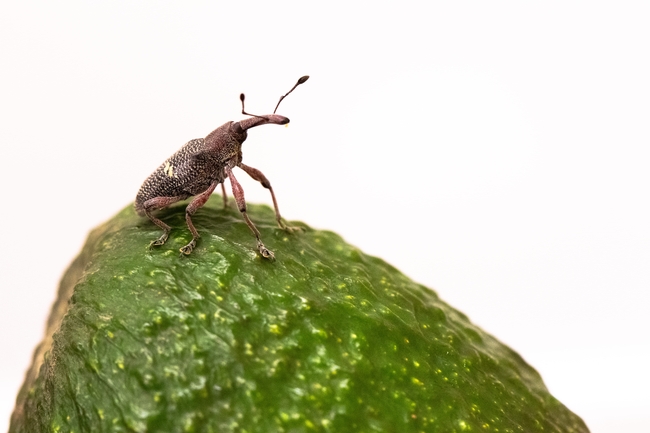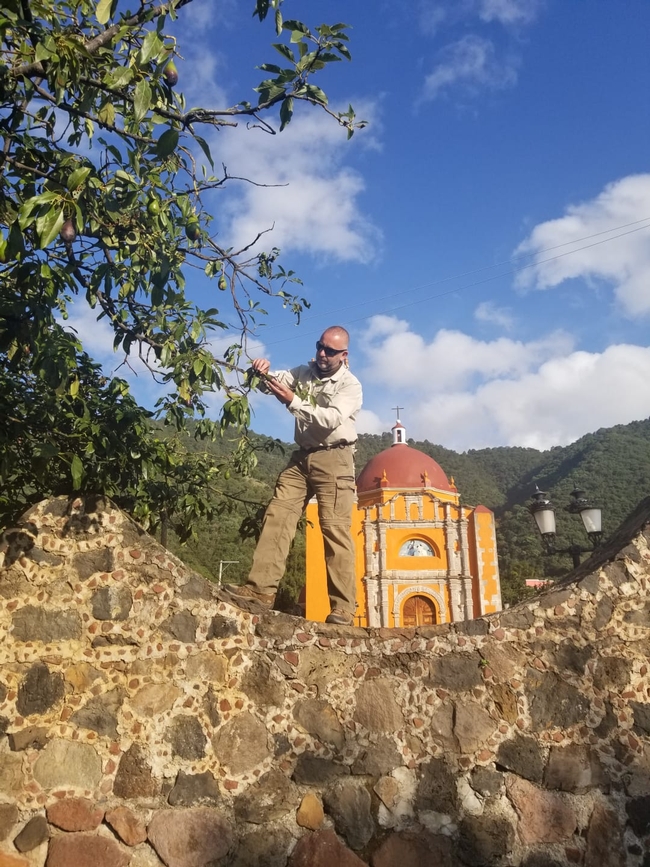
Posts Tagged: pests
The scent that could save California’s avocados
Scientists search for pheromone to disrupt insect mating
UC Riverside scientists are on the hunt for a chemical that disrupts “evil” weevils' mating and could prevent them from destroying California's supply of avocados.
Avocado weevils, small beetles with long snouts, drill through fruit to lay eggs. The weevil grubs or larvae bore into avocado seeds to feed, rendering everyone's favorite toast topping inedible.
“They're extremely hard to control because they spend most of their time deep inside the fruit, where they're very well protected from insecticides and natural enemies,” said UCR researcher Mark Hoddle, a UC Cooperative Extension entomology specialist.
Not only are the insects reclusive, they are also understudied, making information about them hard to come by. “All books on avocado pest management will tell you these weevils are bad. They're well recognized, serious pests of avocados, but we know practically nothing about them,” Hoddle said.
One strategy for controlling pests is to introduce other insects that feed on them. However, that is unlikely to work in this case. “Natural enemies of these weevils seem to be extremely rare in areas where this pest is native,” Hoddle said.
To combat avocado weevils in Mexico, an area where they are native, and to prevent them from being accidentally introduced into California, Hoddle is working with Jocelyn Millar, a UCR insect pheromone expert. They are leading an effort to find the weevil's pheromone, with the goal of using it to monitor these pests and prevent them from mating in avocado orchards.
Pheromones are chemicals produced and released into the environment by an insect that can be “smelled” by others of its species, and affect their behavior.
“We could flood avocado orchards with so much pheromone that males and females can't find each other, and therefore can't reproduce,” Hoddle said. “This would reduce damage to fruit and enable growers to use less insecticides.”
Alternative control strategies could include mass trapping, using the pheromone as a lure, or an “attract-and-kill” approach, where the pheromone attracts the weevils to small sources of insecticide.
The work to identify, synthesize and test this pheromone in the field is supported by grants from the California Department of Food and Agriculture, as well as the California Avocado Commission.
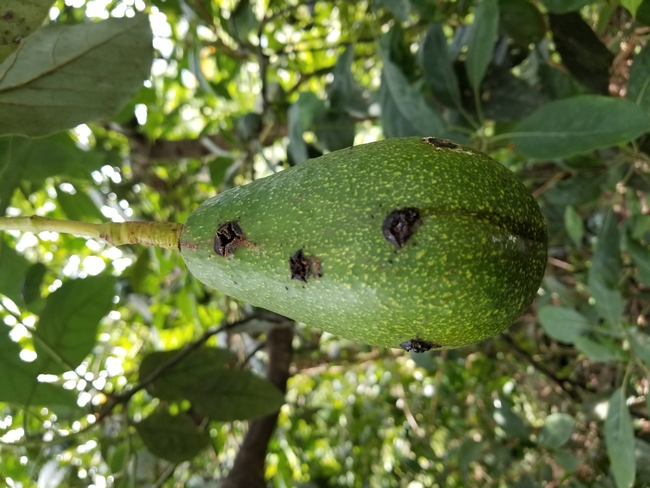
An initial phase of the project sent Hoddle to a base of operations three hours south of Mexico City, an area with large weevil populations. Using a special permit issued by the USDA, Hoddle brought weevils back to UCR's Insectary and Quarantine facility.
Hoddle and Sean Halloran, a UCR entomology researcher, captured the chemicals that avocado weevils release into the air. Possible pheromone compound formulas were identified from these crude extracts and are now being synthesized in Millar's laboratory.
“Weevil pheromones have complicated structures. When they're made in a lab, they can have left- or right-handed forms,” said Hoddle. Initially, Millar's group made a mixture of both forms to see if the blend would work as an attractant, as it is far cheaper to make the blend than the individual left- or right-handed forms.
Field work in Mexico with the pheromone cocktail by Hoddle, his wife Christina Hoddle, an associate specialist in entomology, and Mexican collaborators did not get a big response from the weevils, suggesting that one of the forms in the blend could be antagonizing the response to the other.
As the next step, the researchers plan to synthesize the individual forms of the chemicals and test the insects' response to each in Mexican avocado orchards.
Because the levels of avocado imports from Mexico are increasing, the risk of an accidental weevil invasion is rising as well. Hoddle is hopeful that the pheromone will be successfully identified and used to lower the risk this pest presents to California's avocado growers.
“We've been fortunate enough to be awarded these grants, so our work can be implemented in Mexico and benefit California at the same time,” Hoddle said. “The tools we develop now can be used to make sure crops from any exporting country are much safer to import into California.”
Visitors Marvel at Tadpole Shrimp at Bohart Museum Open House
They marveled at the tadpole shrimp. They crafted tadpole shrimp-themed hats and puppets using paper plates and googly eyes. And they asked questions. Lots of questions. It was all part of the UC Davis Bohart Museum of Entomology open house, themed "Bugs in Ag: What Is Eating Our Crops...
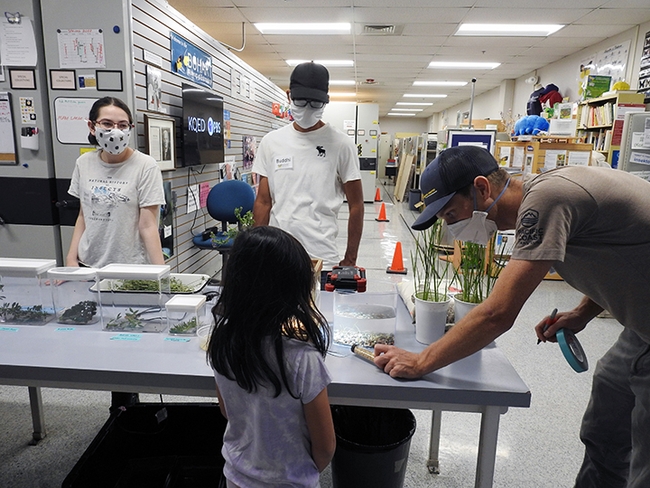
Cooperative Extension specialist Ian Grettenberger (far right) of the UC Davis Department of Entomology and Nematology leans over to talk to a visitor. In back are postdoctoral fellow Buddi Achhami (right) of the Grettenberger lab and UC Davis undergraduate student Omri Livneh. (Photo by Kathy Keatley Garvey)
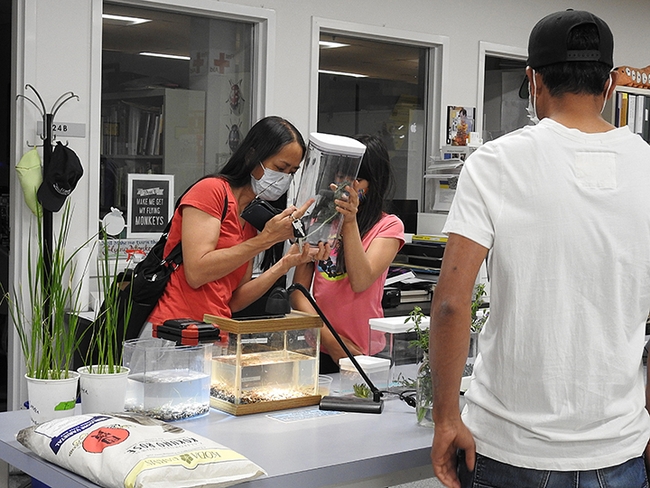
Visitors examine a Grettenberger lab display at the Bohart Museum open house. In the foreground is postdoctoral fellow Buddhi Achhami of the Grettenberger lab. (Photo by Kathy Keatley Garvey)
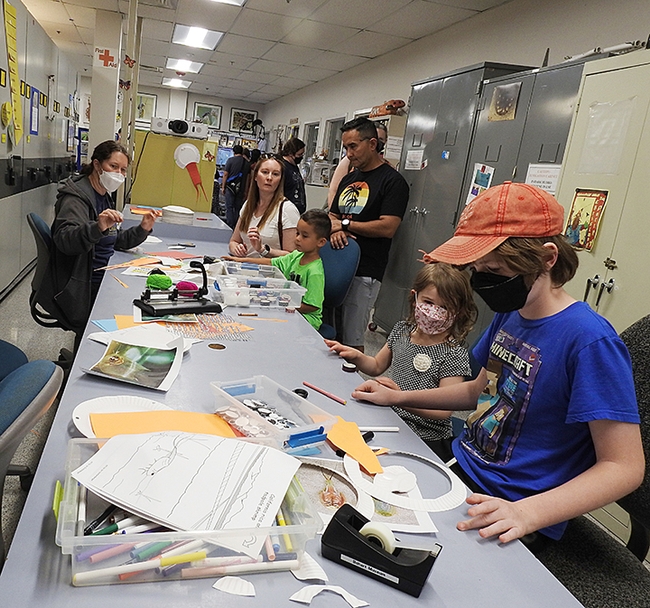
The arts and crafts table at the Bohart Museum featured making tadpole shrimp-themed hats and puppets. At the far left is Tabatha Yang, education and outreach coordinator. (Photo by Kathy Keatley Garvey)
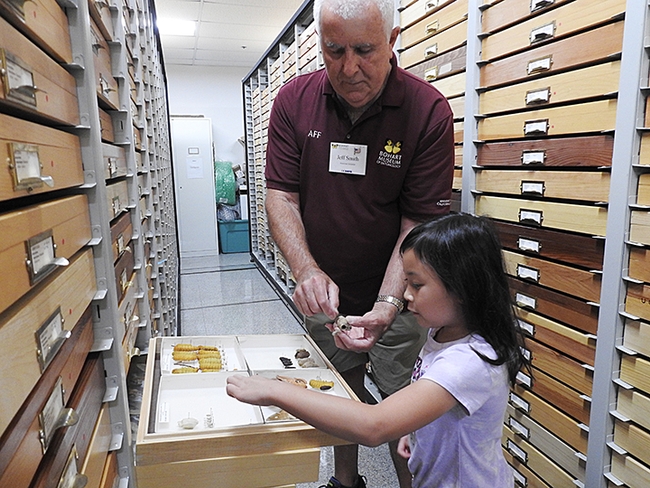
Entomologist Jeff Smith, curator of the Lepidoptera collection at the Bohart Museum, shows a display to Riley Laurel, 6, of Vacaville. (Photo by Kathy Keatley Garvey)
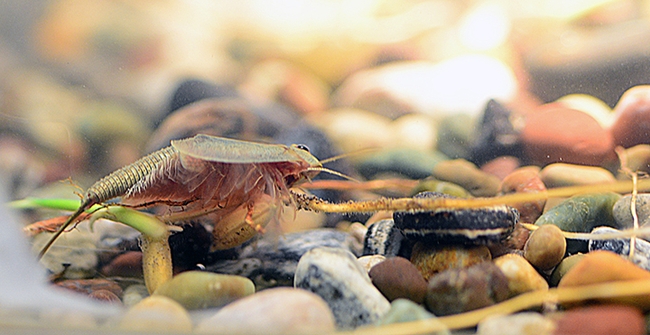
The tadpole shrimp is neither a tadpole nor a shrimp. It's a crustacean that's a pest of rice. (Photo by Kathy Keatley Garvey)
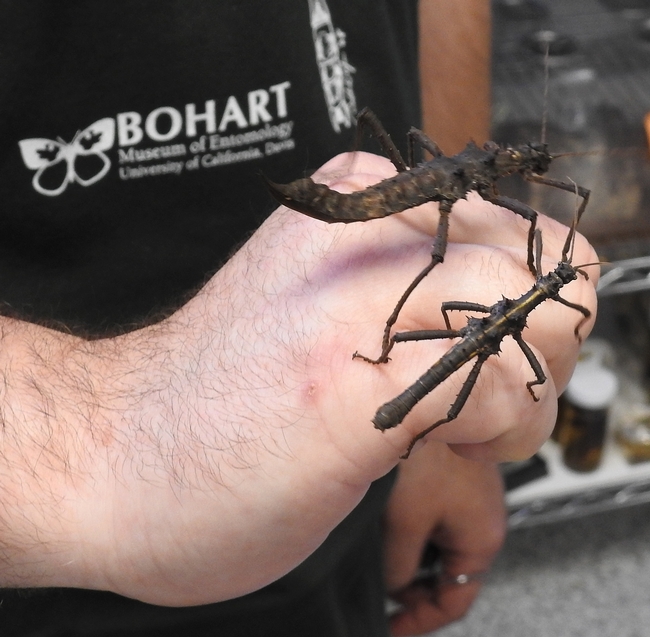
Two stick insects rest on the hand of Bohart lab assistant Brennen Dyer. (Photo by Kathy Keatley Garvey)
In Drinking Your Cup of Joe, Do You Ever Think About Coffee Plantation Pests?
When you're drinking your daily cup of Joe to power your day, do you ever think about coffee plantation pests, such as the coffee borer beetle, aka coffee berry borer, Hypothenemus hampei? Agroecologist Estelí Jiménez-Soto, a postdoctoral scholar/lecturer at UC Santa Cruz,...
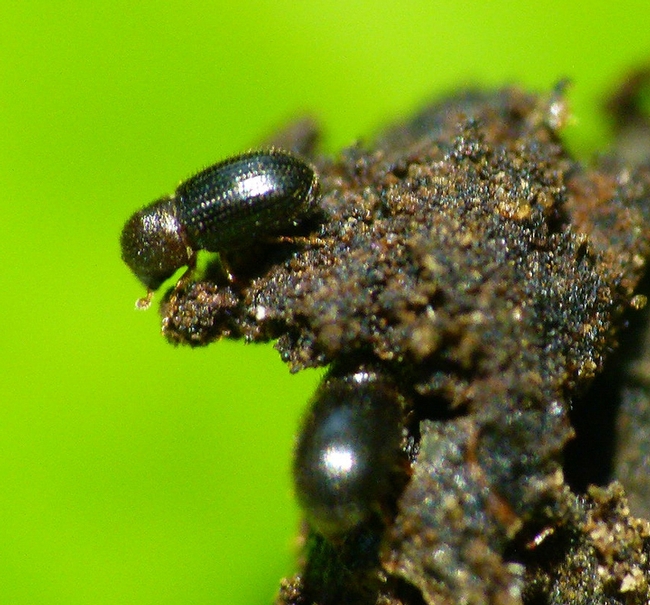
The coffee borer beetle, also known as the coffee berry borer, Hypothenemus hampei. (Courtesy of L. Shyamal, Wikipedia)
Bohart Museum Virtual Open House: Think Pests of Alfalfa and Rice
Mark your calendar. The Bohart Museum of Entomology at the University of California, Davis, is hosting a virtual open house dealing with alfalfa and rice. Cooperative Extension agricultural specialist Ian Grettenberger, assistant professor, UC Davis Department of Entomology...
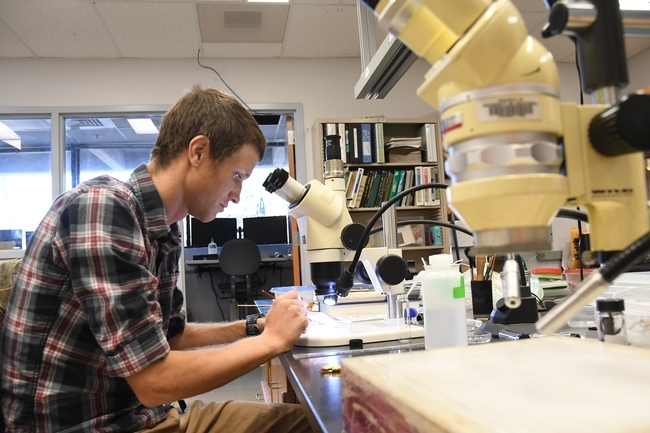
Cooperative Extension specialist Ian Grettenberger at work in his lab at UC Davis. (Photo by Kathy Keatley Garvey)
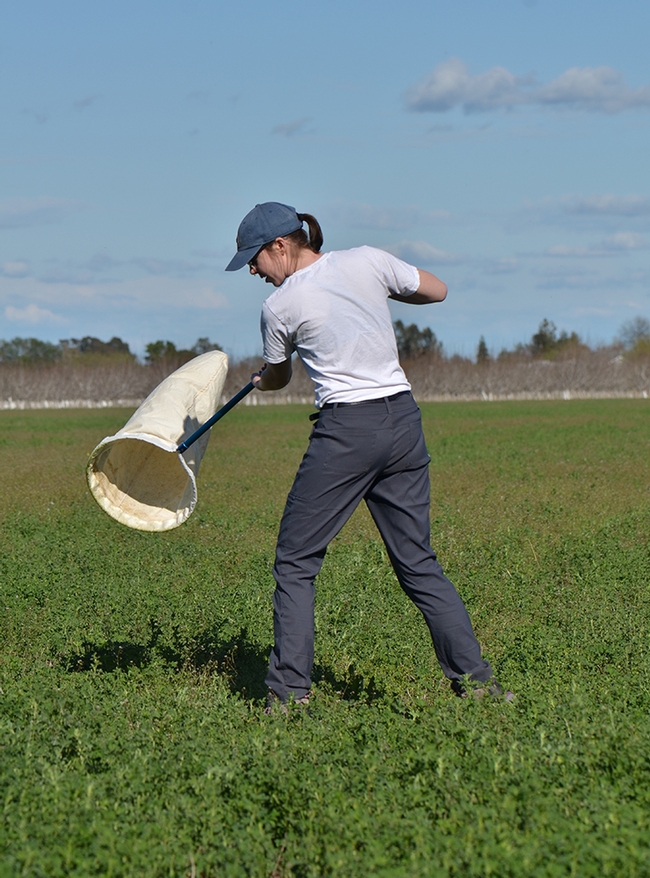
Graduate student Madi Hendrick sweeping an alfalfa field for pests.
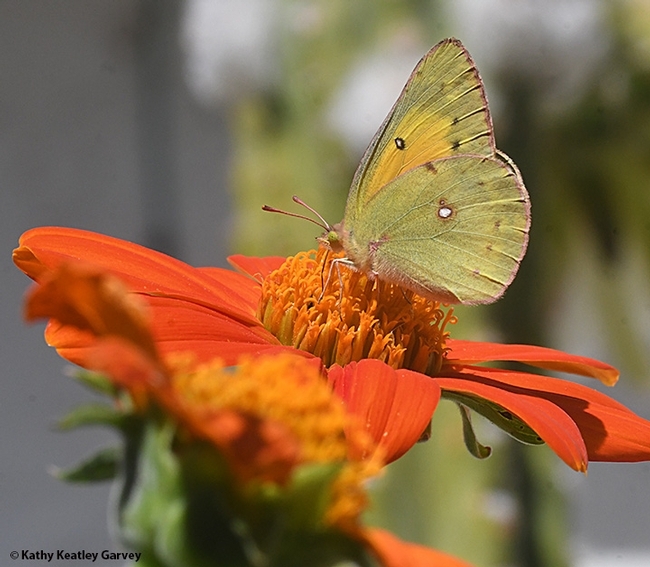
In its adult form, the alfalfa butterfly is attractive. In its larval form, it's a pest of alfalfa. (Photo by Kathy Keatley Garvey)
A Monarch Paradise in July
Monarchs, bless their little hearts, souls and wings, deposited 16 eggs on our milkweed plants in July. Being quite obliging and considerate, we like to give the monarchs, Danaus plexippus, in our Vacaville pollinator garden a choice: tropical milkweed, Asclepias...
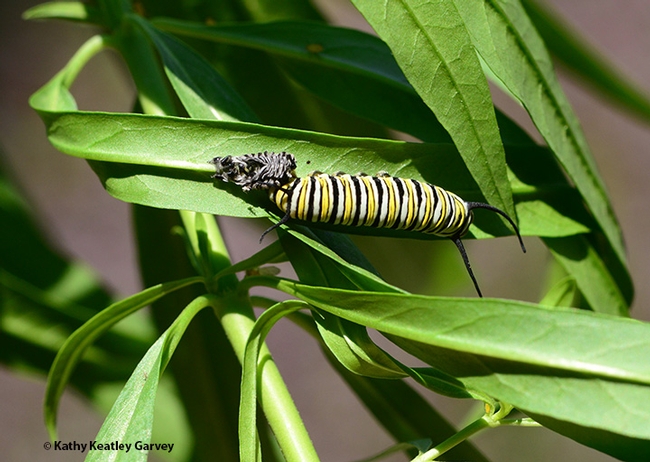
A monarch caterpillar molting. (Photo by Kathy Keatley Garvey)
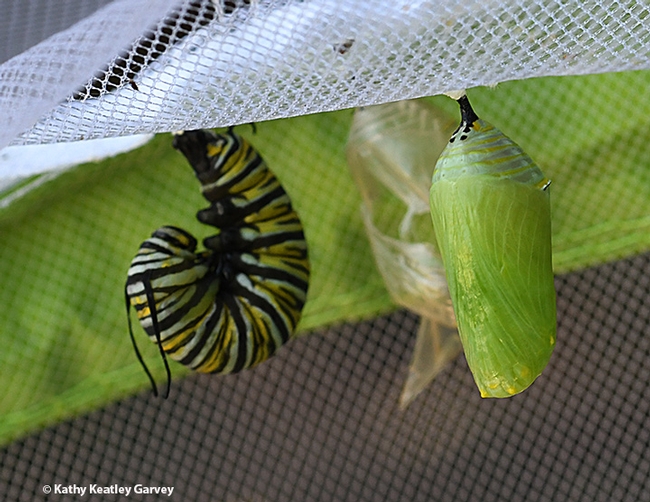
A monarch caterpillar j'ing; soon it will be a chrysalis. (Photo by Kathy Keatley Garvey)
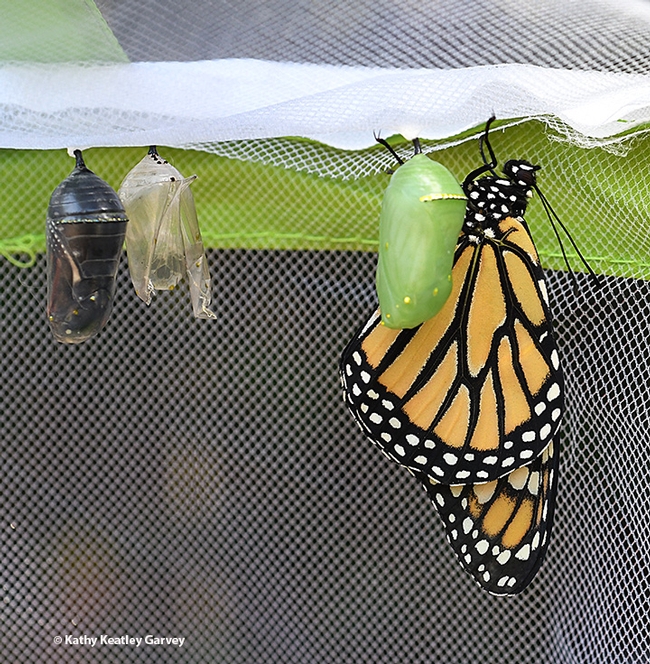
From left, a chrysalis about to release a monarch; an empty chrysalis or empty pupal exoskeleton, exuvia; a chrysalis; and an newly eclosed adult monarch. (Photo by Kathy Keatley Garvey)
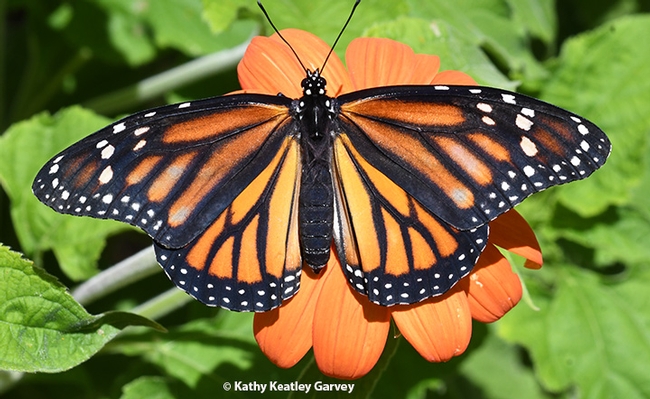
A newly eclosed female monarch on a Mexican sunflower, Tithonia. (Photo by Kathy Keatley Garvey)
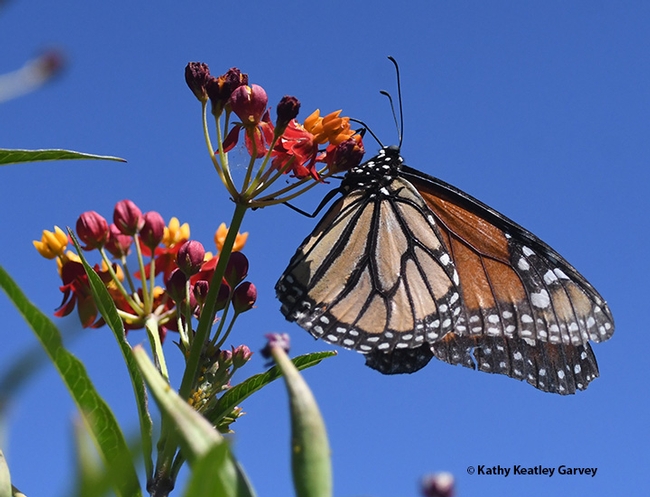
A female monarch nectaring on a tropical milkweed. This milkweed yielded five caterpillars. (Photo by Kathy Keatley Garvey)

